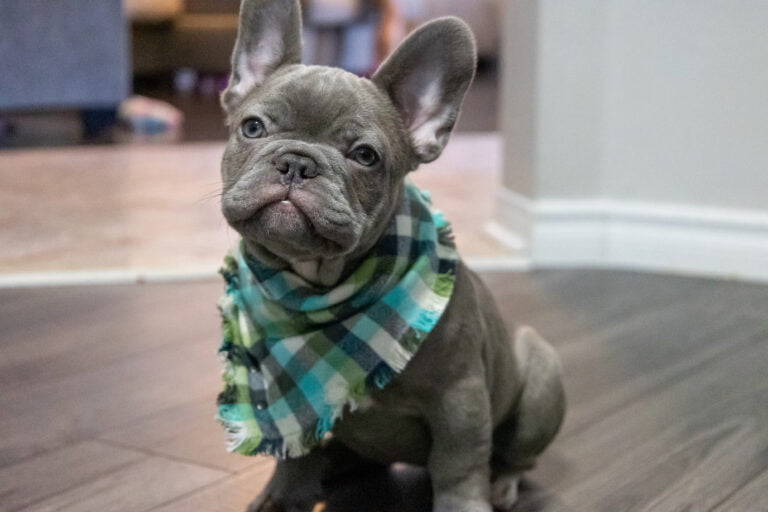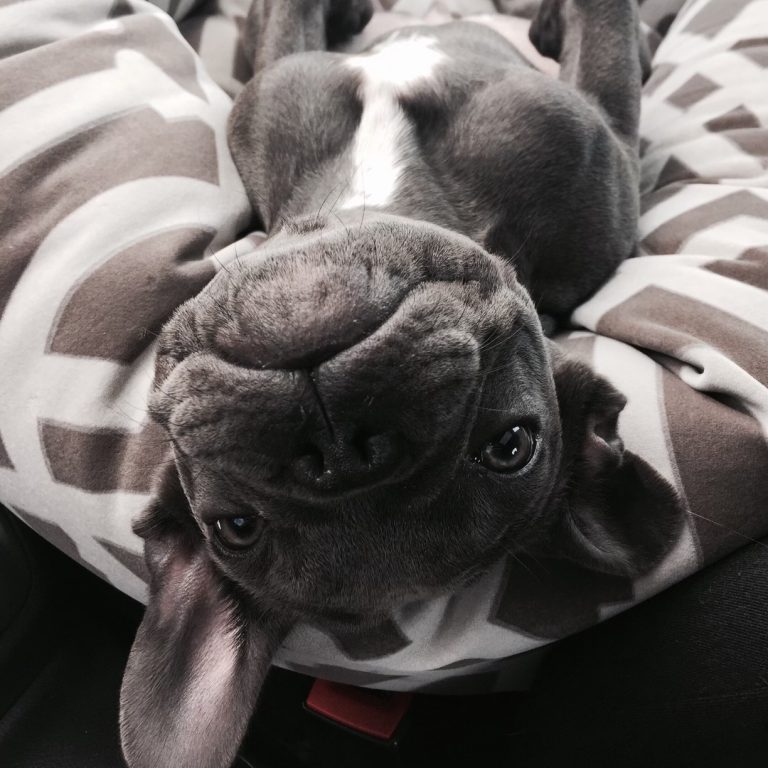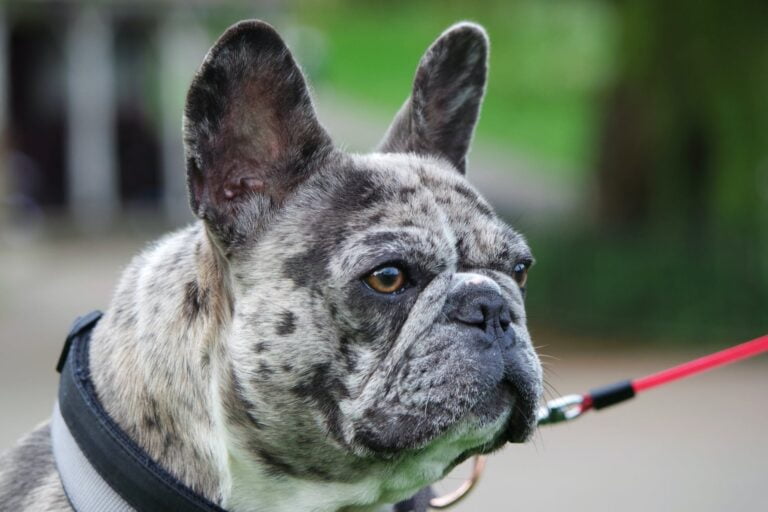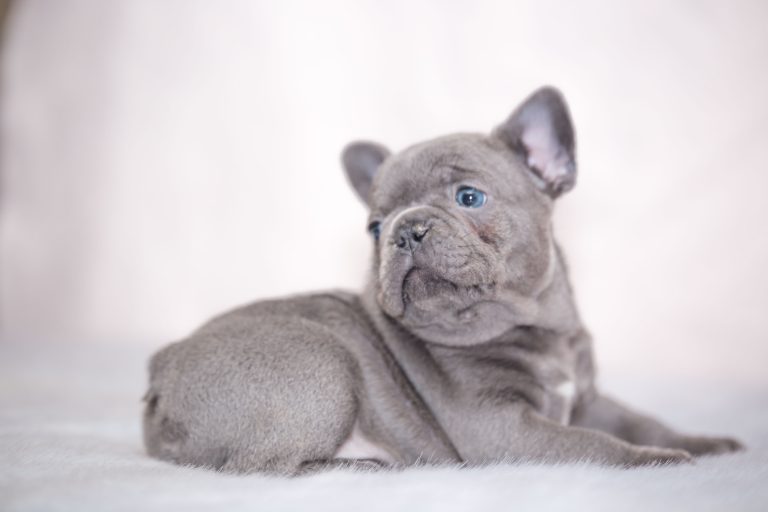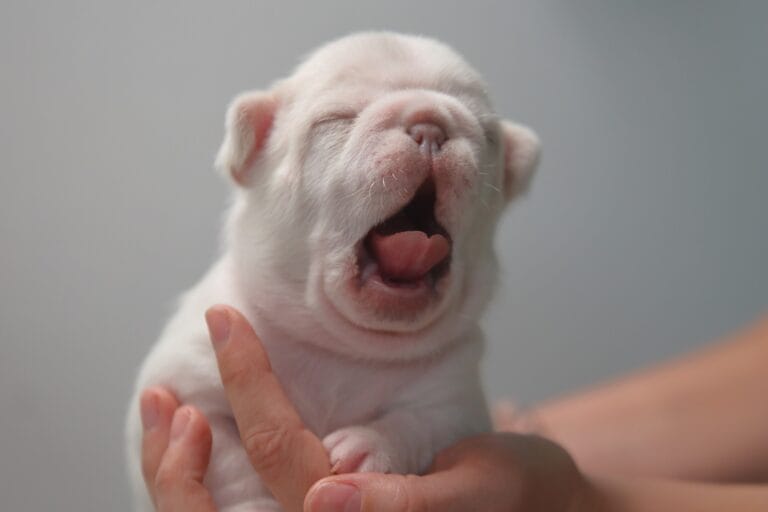Decoding the genetics behind the vibrant color palette of French Bulldogs may seem challenging, but it’s a fascinating journey. This guide aims to break down complex genetic concepts into comprehensible segments, making DNA reports less daunting and more insightful.
French Bulldog DNA Color Genes
It is important to know that every trait discussed is made up of 2 pairs, one passed from both mom and dad. In some instances, you require 2 copies (recessive genes) and others will display a Color or trait with just one (dominant genes).
A-Locus (Pattern)
The A-locus (Agouti) has three possible options (alleles), Ay – Fawn, At – Tan, a – solid.
Your DNA report may report this with both genes together (ie At/Ay) or by stating the copies individually ( At 1 copy tan, Ay 1 copy fawn. a – 1 copy solid).
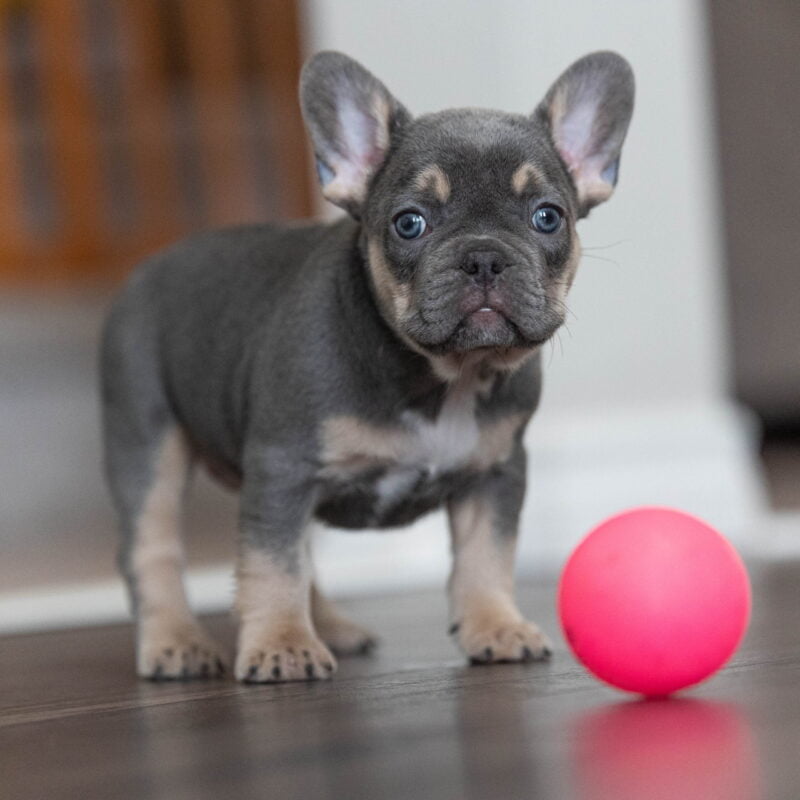
There will be a total of two of any of the mentioned alleles. Here are a few examples:
- Ay/Ay – 2 copies Fawn
- At /a– 1 copy Tan Points + 1 copy solid
- At/At – 2 copies Tan Points
- Ay/n + At/n (or Ay/At) 1 Copy Fawn, 1 Copy Tan Points
If Ay is present, it will dominate the other genes and the Frenchie will be fawn. There is one exception to this, if (K-locus) brindle is present the At fawn gene will not appear as it works in combination. If the “At” gene is present with “a“, the “At” tan point will dominate and the Frenchie will have tan points. The “a” solid gene requires both copies to be present in order to be solid.
At/At or At/a Tan Points can be further modified by the As Saddle / Creeping Tan gene. Two copies (As/As) can result in larger tan point areas on the dog, but the dog must not be cream and be free of brindle.
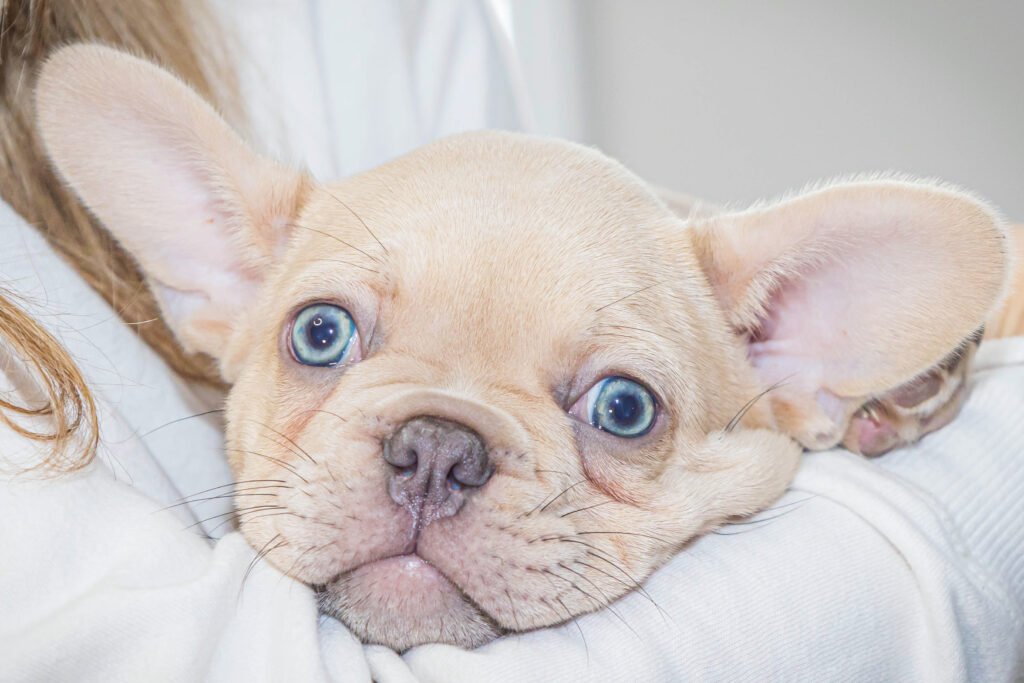
B-Locus (Brown / Testable Chocolate)
This gene is responsible for brown, known as testable chocolate, and works with other genes to create Isabella French Bulldogs. This is a recessive gene and you will require two copies in order for the French Bulldog to display the testable chocolate color. It will appear as b/b or state the B-locus has two copies. 1 copy would be a carrier.
- B/B or N/N (no copies) – negative
- B/b or b/N (1 copy) – carries but does not display testable chocolate.
- b/b (2 copies) displays testable chocolate.
Cocoa
The primary chocolate gene creates a different shade of brown compared to the B-Locus. Likewise, when combined with other visible colors will look different too. Cocoa is a recessive gene that will require both copies to produce the color.
- b/b (2 copies) displays testable chocolate.
- N/co (1 copy) – dog carries but does not display cocoa.
- co/co (2 copies) – dog is visible cocoa.
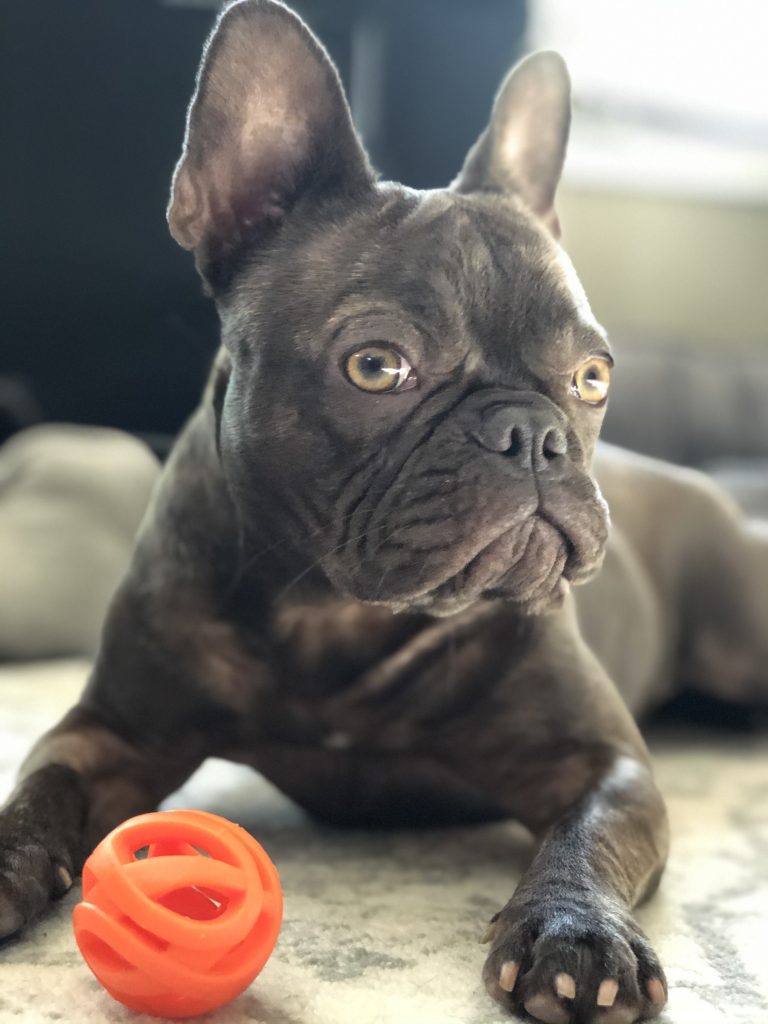
D-Locus (Blue)
The dilute genes are responsible for reducing the saturation of coat color. By itself, it creates a blue French Bulldog. With other colors it will create Isabella and lilacs. It will appear as follows:
- D/D or N/N (no copies) – dilute gene is not present.
- D/d or d/N (1 copy) – dog carries dilute but does not display it.
- d/d (2 copies) – dog displays dilute (blue).
Some reports may read with a number such as d1 in place of d. (d2/d2 is still 2 copies of dilute)
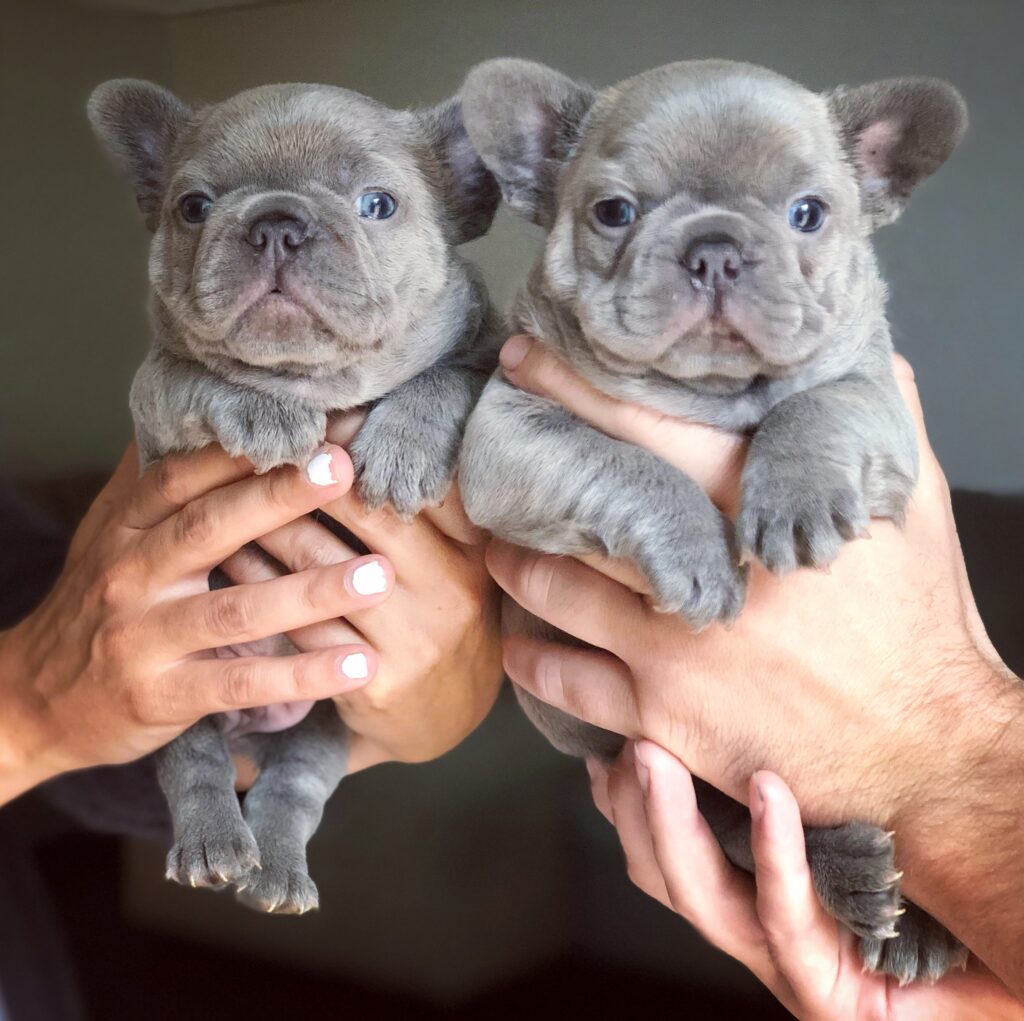
E-Locus (Cream)
The E-Locus is responsible for creating cream or white/yellow French Bulldogs. It requires two copies of “e” to become visible, and when present will dominate other colors and patterns. The E-Locus on a French Bulldog can also be Em which is a dark mask around the mouth. Some reports will split the E-Locus into one for “E” and one for “Em”, but you should have a total of two copies.
You can have a combination of a mask and color gene, such as Em/e, or just two masks or colors such as e/e. The presence of “Em” will result in a dark mask, “E” the typical black base for most Frenchie colors, or 2 copies of “e” produce a white or cream base.
- E/E (no copies of cream) – the dog does not carry cream.
- E/Em (1 copy of Mask) or Em/Em (2 copies of Mask) – the dog will have a mask.
- e/Em (1 copy of Mask, 1 copy of Cream) – the dog will have a mask and carries cream but does not display it.
- e/E (1 copy of cream) – the dog carries cream but does not display it.
- e/e (2 copies of cream) – the dog is visible cream.
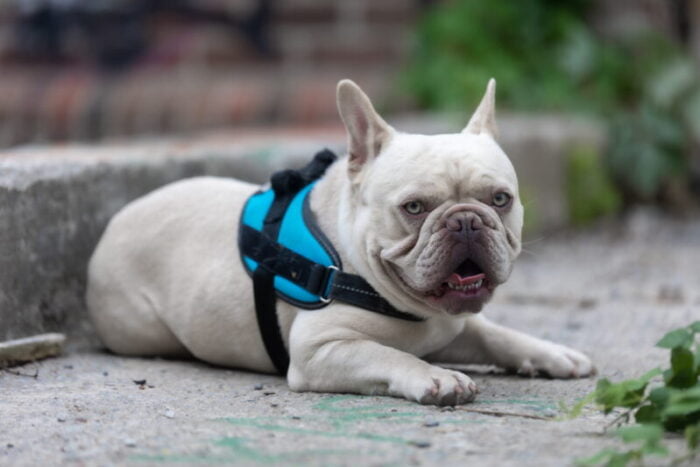
K-Locus (Black/Brindle)
The K-Locus is displayed in a few different ways depending on the French Bulldog DNA testing company, but anytime one copy is present it will appear on the dog. It is not intensified with a second copy.
There are only two alleles, Kbr Brindle and Ky Black. Here are the various ways we’ve seen it expressed:
- N/N or Ky/Ky (no copies) – The dog does not carry brindle.
- K/N, Kb/n, Kbr/n, Kb/Ky, Kbr/Ky (1 copy) – The dog will be visible brindle. The dog can not be fawn even if Ay on the A-Locus.
- K/K, Kb/Kb, Kbr/Kbr (2 copies) – The dog will be visible brindle. The dog can not be fawn even if Ay on the A-Locus.
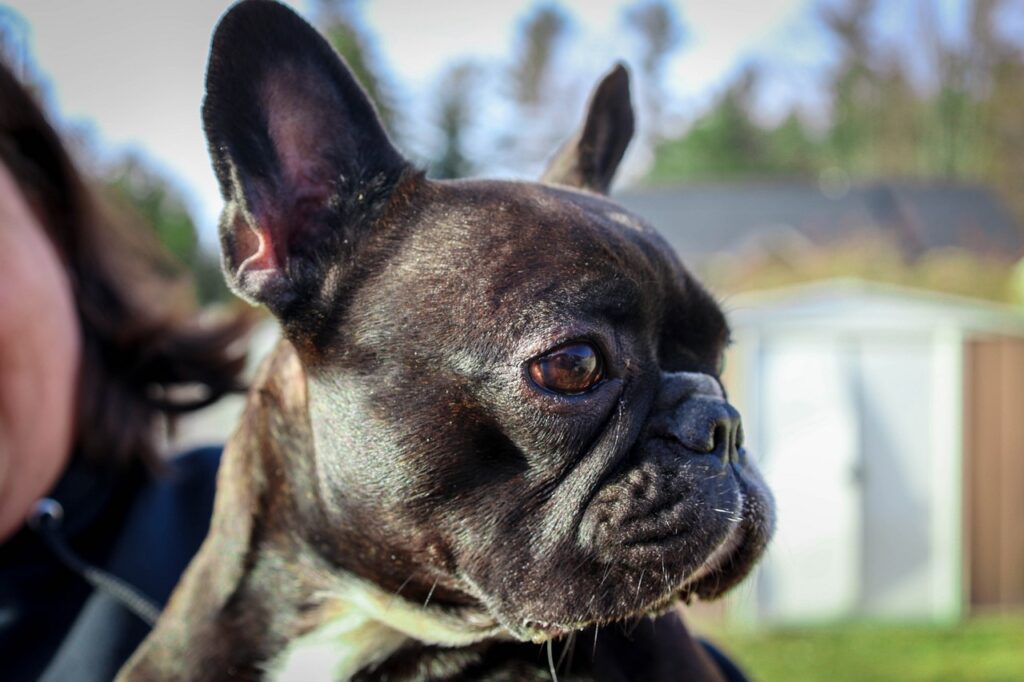
S-Locus (Piebald / Spotting)
The Piebald gene in French Bulldog DNA requires both copies to be present to display. It will randomly remove pigments resulting in large areas of a different color. On most tests, it is represented as S or Sp to indicate the presence of a copy. To confuse things further, some testing copies us S to indicate a negative finding for Piebald.

It is a dominant trait in some breeds, meaning it will appear with only one copy. However, with French Bulldogs, both copies are necessary to display the trait.
- N/N -(no copies) – dog does not carry Piebald.
- N/S or Sp/S (1 copy) – dog carries but does not display piebald or very limited.
- S/S or Sp/Sp (2 copies) – dog displays piebald.
Merle
Merle French Bulldogs will have random spotting or mottling, and the pattern can be further predicted with other testing with certain companies. Merle is a dominant trait, so only one copy is required.

It is also preferred as any time two copies of Merle are present on a dog, it can lead to hearing and vision problems so caution must be exercised when breeding Merles.
- N/N or m/m (no copies) – dog is not merle.
- M/N or M/m (1 copy) – dog is merle.
- M/M (2 copies) – dog is merle and at great risk of hearing and vision deficiencies.
Copies of Merle can also be identified by type. For instance, m/M266 is the same as M/m)
Long-Hair (Fluffy)
Long-haired or fluffy Frenchies, require two copies of the long-haired gene. There are different numbers sometimes associated with the gene (L1,L2,etc) but if two copies of this gene are present it will produce a fluffy Frenchie.
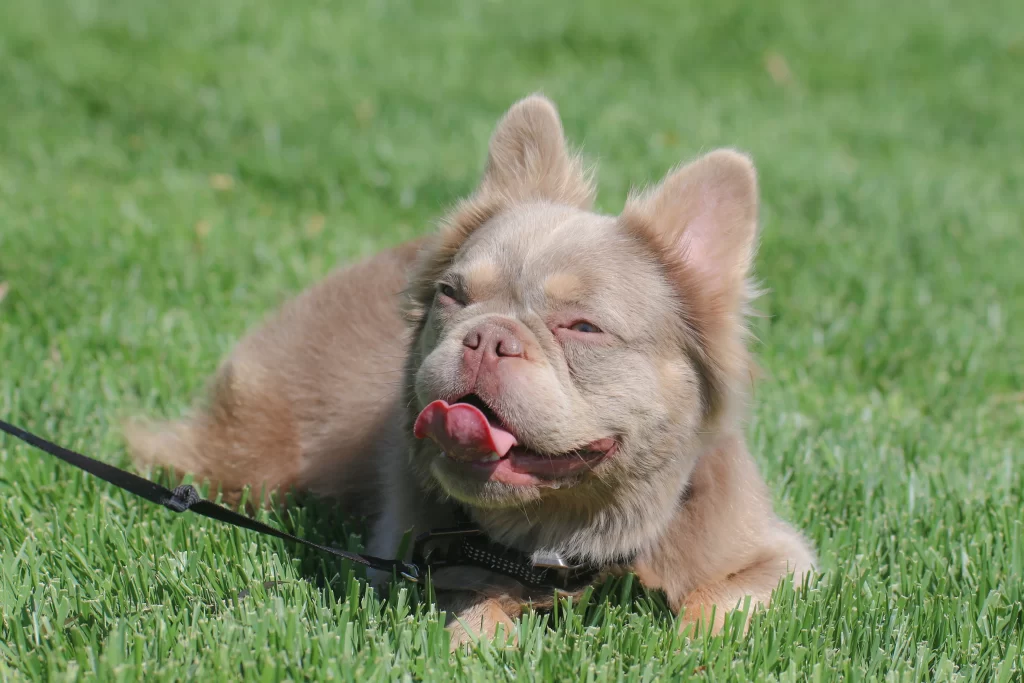
- L/L or Sh/Sh (no copies) – dog does not carry the gene.
- L/l or Lh/Sh (one copy) – dog carries, but does not display long hair.
- l/l or Lh/Lh (two copies) – dog is a long-haired or fluffy French Bulldog.
Intensity
The Intensity gene has been connected to impact the saturation of the Yellow/Red, creating an extreme dilution. Research on this gene is improving every day, but currently, it is believed to impact coat color when both copies are present.
- I/I (no copies) – dog does not carry intensity.
- I/i (1 copy) – dog carries, but is unlikely to show visibly.
- i/i (2 copies) – dog displays intensity.

Frenchies are Genetic Wonders
Understanding your French Bulldog’s DNA is much more than just unraveling their coat colors. It’s about appreciating their uniqueness and playing an active role in their health. So, the next time you’re admiring a Frenchie’s captivating hues, remember that there’s an intriguing genetic narrative hidden beneath each shade.
French Bulldog Stud Service
Do you need a French Bulldog Stud? Enter your information below to receive instant pricing and more information about using a BluFrenchibles sire.
French Bulldog Color FAQ
A lilac French Bulldog is both visibly blue & chocolate (cocoa). It has two copies of each which produces a light grey coat, light eyes and skin pigmentation.
An Isabella French Bulldog is both visibly & chocolate (testable chocolate/brown). It has two copies of each and is visibly light brown with light eyes and skin pigmentation.
An Isabella has two copies of the testable chocolate (brown) gene, while a lilac has two copies of cocoa. Two separate genes that are named similarly creates some confusion on this French Bulldog color.
A Platinum French Bulldog is either a Lilac or an Isabella (or both) in addition to having two copies of cream (e). This creates a cream Frenchie with light eyes and skin pigmentation.
A Newshade French Bulldog contains two copies of the brown (testable chocolate/chocolate) and two copies of cocoa(co). This would be a Newshade chocolate. Different versions exist with more recessive genes – Newshade Isabella, lilac, etc.
You can enter the genetics into a French Bulldog Color Identifier, such as breedstream.
The dilute (blue) gene & either chocolate gene (brown/cocoa) together will produce lighter blue/green eye pigment. Basically the dog must be a variation of lilac or Isabella, otherwise brown is the most likely eye color.
If you would like a further breakdown of how Genetic and Recessive genes work, check out this video:


